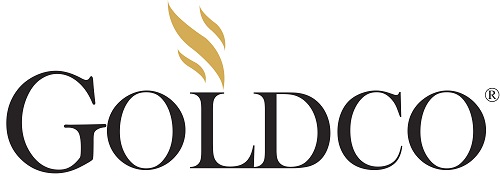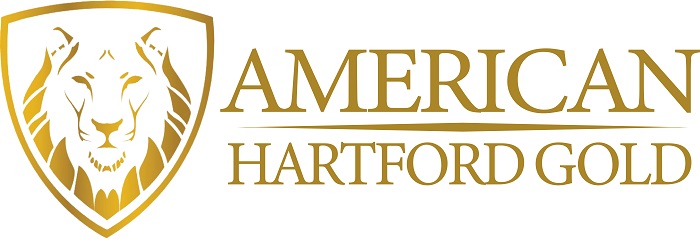Last Updated on February 15, 2024 by Ben
401(k) Contribution Limits
401k contribution limits may seem like a confusing topic, but they are actually quite straightforward. This blog post will explain 401k contribution limits in detail and help you understand how to stay within the limits while maximizing your contributions
401(k) Contribution Limits
In 2021, your individual 401(k) contribution limit was $19,500, with an extra $1,000 for each year of age 50 or more. Individual 401(k) limits in 2022 will be $20,500 per year, or $27,000 if you’re age 50 or older.
Individual contribution limits are combined across 401(k) plans. If you change jobs in 2021 and begin a new career, your individual 401(k) contributions will be restricted to a combined total of $19,500, or $26,000 if you’re over 50 years old, at both jobs. Employer matching contributions or non-matching employee contributions to your account do not affect your individual contribution limit.
Non-tax-deductible (and non-Roth) contributions to personal 401(k)s may be made in excess of the employee contribution limit. Around a fifth of 401(k) plans allow workers to contribute to these types of plans, which are still subject to the 2021 maximum of $64,500 ($67,500 if you’re 50 or older), and the 2022 limit of $61,000 (or $67,500 if you’re 50 or older).
Maximum 401(k) Contribution Limits
Employers frequently make 401(k) matching contributions part of their compensation package. Your employer will duplicate a portion of your payments, up to a certain percentage of your income, if you join a 401(k) plan. Some companies may also provide non-matching 401(k) contributions in the form of a percentage of profits to their employees.
Even though an employer’s 401(k) match and non-matching contributions do not count toward your $19,500 employee deductible contribution limit, they are still restricted by the overall contribution limit.
In 2021, the maximum combined contributions to a 401(k) plan for an employee and employer were $58,000. In 2022, this rises to $61,000. Employees aged 50 and older will be able to make catch-up contributions of $64,500 in 2021 or $67,500 in 2022. The sum of all payments to a worker must not exceed 100% of their yearly pay.
Traditional vs Roth 401(k) Contribution Limits
401(k) accounts are available in both traditional and Roth forms, much like IRAs. The same annual employee and employer contribution restrictions apply to each type.
Traditional 401(k)s
A traditional 401(k) allows you to deduct the entirety of your employee contributions from your taxable income each year. In general, this implies that if you made $50,000 and contributed $5,000 to a traditional 401(k), you would be taxed as if you had earned $45,000. When you retire or reach age 59 1/2, your income taxes are calculated based on your marginal tax rate at that time.
Roth 401(k)s
You contribute money to a Roth 401(k) on which you’ve already paid taxes. Withdrawals made after you reach age 59 1/2 are tax-free as long as they have been at least five years since your starting contribution. Roth 401(k)s have their own set of drawbacks:
- Roth 401(k)s are not available to all employers, but their popularity is on the rise.
- You can’t save a 401(k) match in a Roth account if your firm provides one. Employer matching contributions are maintained in a traditional 401(k).
- Roth 401(k)s do not have any income limitations and may be opened by anybody with access to a Roth 401(k).
401(k) Contribution Limits for Highly Compensated Employees
Employees who are highly compensated may have extra contribution restrictions in their 401(k) plans.
Highly compensated employees (HCEs) may contribute no more than 2% of their pay to their 401(k) in addition to the average non-highly compensated employee contribution. That implies that an HCE can contribute a maximum of 7% of their salary, rather than the permitted 13 percent under previous rules. Aside from the federal restriction, your firm may have specific limits set to remain in compliance.
The IRS determines you are an HCE if:
- If you owned 5% or more of a firm last year and are participating in its 401(k) plan this year, you qualify.
- If you earned $130,000 or more from a company with a 401(k) plan in 2020, you could take money out of the account this year.
Unlike the majority of other 401(k) limit rules, HCE classifications are based on your status from the previous year. The employee compensation threshold for the 2022 plan year is $135,000.
If the HCE contribution rates exceed the non-HCE contribution rates by more than 2%, workplace retirement plans may lose their tax-advantaged status. As an HCE, you may be restricted from making full contributions to your 401(k) to the employee contribution maximum owing to low 401(k) participation rates. If you are qualified, you should still be able to make catch-up contributions in addition to your HCE cap.
Consider contributing to a retirement account outside of your employer-sponsored plan, such as a traditional IRA, if you’re limited by HCE limits but want to contribute more.
What Occurs If You Contribute Too Much to Your 401(k)?
If your 401(k) contributions go above the limits listed above, you may end up paying taxes twice: once as part of your taxable income for the year you contribute and a second time when you take money out of your plan. Until you withdraw them, earnings stay tax-deferred.
If you discover that you contributed too much to your 401(k), notify your HR department or payroll department and plan administrator immediately. You have until April 15 of the following year to correct the mistake and receive the money-back, unless it’s an extraordinary circumstance.
When you get a larger refund than anticipated, your excess deferrals to a 401(k) plan will have to be deleted and returned to you. Your W-2 will need to be adjusted to reflect the overages as part of taxable income. If the excess deferrals earned any money, you would be sent another tax form for the following year to complete.
How To Maximize Your 401(k) Retirement Savings
A company 401(k) account might be useful for increasing your retirement assets. Follow these to get the most out of your 401(k).
1. Set your contribution level to get the most out of your employer’s 401(k) match. If your firm meets a certain proportion of your donations, you should raise your contribution level to take maximum advantage of the match. Otherwise, you’re losing out on money.
2. Begin contributing to your 401(k) immediately. 401(k)s have annual contribution limits, so the sooner you start saving, the more time your money has to grow.
3. Take advantage of target-date funds. Choose a target-date fund aligned with your planned year of retirement if you’re overwhelmed by the characteristics of your 401(k) plan’s investment options. Target date funds are designed for your retirement timetable, making them excellent choices for novices and those who want to be more hands-off investors.
4. Grow your 401(k) contribution percentage frequently. Enlarge your 401(k) contribution rate by at least one percentage point every year. Small, continual boosts have a minor impact on take-home pay but have significant influence over time on your retirement fund. In addition, if you get any raises or bonuses, set aside a portion of them for your savings.
5. Understand your employer’s 401(k) match’s vesting period. A vesting period is when your employer’s 401(k) matching contributions have an expiration date. This indicates that you must work for a specific number of years with your current employer before receiving the whole value of their contributions to your 401(k) account. If you leave the firm before you’re completely vested, you may lose some or all of the matching contributions’ value.
6. When you change jobs, roll over your 401(k). Each year, several company retirement plans go missing or are forgotten by employees. If you’re happy with your current 401(k), make sure you have the right login information and check in on a regular basis. If you are no longer connected with the company or you do not like the investment options, you can rollover your plan into your next job’s retirement plan or an IRA.
Recommended Silver IRA Companies
Goldco



www.goldco.com



Star Rating
Goldco is a privately owned company that focuses on protecting clients’ retirement assets by moving them from 403(b), 401(k), and traditional IRA accounts to a self-directed IRA backed by gold or silver. Goldco’s team of IRA specialists has extensive expertise in assisting customers through the rollover, step-by-step, to make it easier and faster. The company also presents a solid buyback plan.
Goldco is here to assist you in setting up your gold IRA, making sure it goes smoothly. Goldstar clients praise the company for its trustworthiness, ethics, and quality of service. In addition, Goldco received an AAA rating from the Business Consumer Alliance and an A+ from the Better Business Bureau.
Augusta Precious Metals



www.augustapreciousmetals.com



Star Rating
Augusta Precious Metals believes that retirement savings and financial planning are a marathon, not a race. As a result, it promises to collaborate with customers for the rest of their lives for access to high-quality information and products that will guide them through retirement.
The website for Augusta, for example, refers to its specialists as customer success agents, noting their significant knowledge in the field. The team stays up on current events and concerns surrounding gold IRAs, silver IRAs, and other alternative assets. The company is proud of its high degree of expertise and customer service, from the top down, when assisting customers with their retirement goals and objectives.
Augusta takes care of its clients. The team helps them understand their investments and how to diversify their portfolios with precious metals. This customer-centered approach creates trust and loyalty between Augusta and its clients.
American Hartford Gold



www.americanhartfordgold.com



Star Rating
American Hartford Gold (AHG) is a family-managed firm that assists customers in diversifying and safeguarding their assets with precious metals. Silver, gold, and platinum bars and coins, as well as the cutting-edge Gold IRA, are all available.
They supply a wealth of precious metals market intelligence and historical perspective, allowing novice and experienced investors to benefit. The firm is dedicated to giving this information for free so that investors can make the best judgments possible without being influenced.
Final Thoughts – 401(k) Contribution Limits
The 401k contribution limit is the maximum amount of money that can be contributed to a 401k account in a given year. This limit is set by the IRS, and it changes every year. It’s important to stay up-to-date on the latest contribution limits so you don’t accidentally go over and get hit with penalties.


